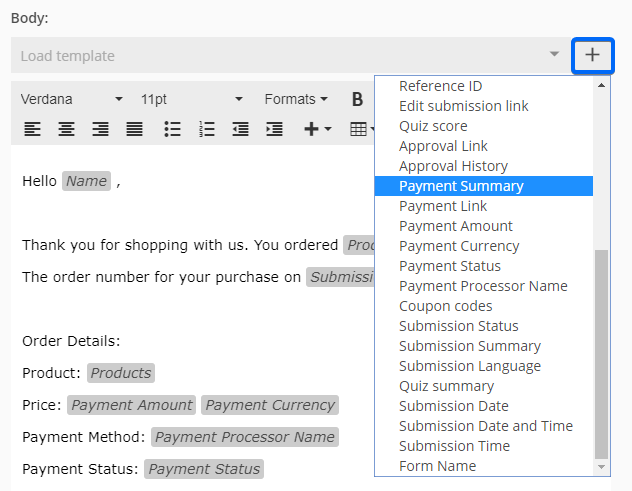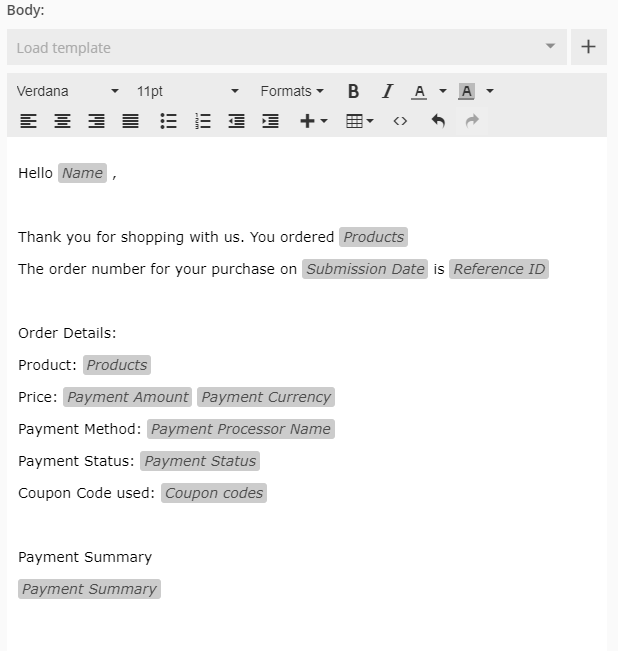Custom template variables on 123FormBuilder online forms
In this post, we’ll take a look at all the email template variables that our form builder has to offer. Using custom templates as your foundation, you can design a unique email and make it look more professional.
The default email template contains an HTML table that renders user input. However, you can add additional information and recipients can receive all the necessary details about submission entries.
In order to add variables in your template click the plus sign near the Body section. This will open a dropdown list with all the available options.

You can add information about the user’s session: IP, Country, Browser, Device type, Referrer, Form Host.
If you have an order web form you can add variables related to their transaction details such as Payment Link, Payment Amount, Payment Currency, Payment Status (complete or incomplete), Payment Processor Name, Coupon codes. Along with the Form Summary you can choose to incorporate the Payment Summary.
Custom links such as the edit submission or approval link can also be placed in the email body. Add the Quiz summary or the Quiz score if you have built a quiz form.
We made the following template for an order form as an example:

All variables will be replaced. A variable will be empty when a user does not fill out a field. Mark fields as required so that you can collect the most important information from your users.
Hide empty fields: If you enable this option, the fields that haven’t been filled will no longer be included in the notification email.
The hide empty fields option works with both custom and default email templates.

Here is how the email template arrives in the inbox:

Similar Articles
Frequently Asked Questions
Here is a list of the most frequently asked questions. For more FAQs, please browse through the FAQs page.